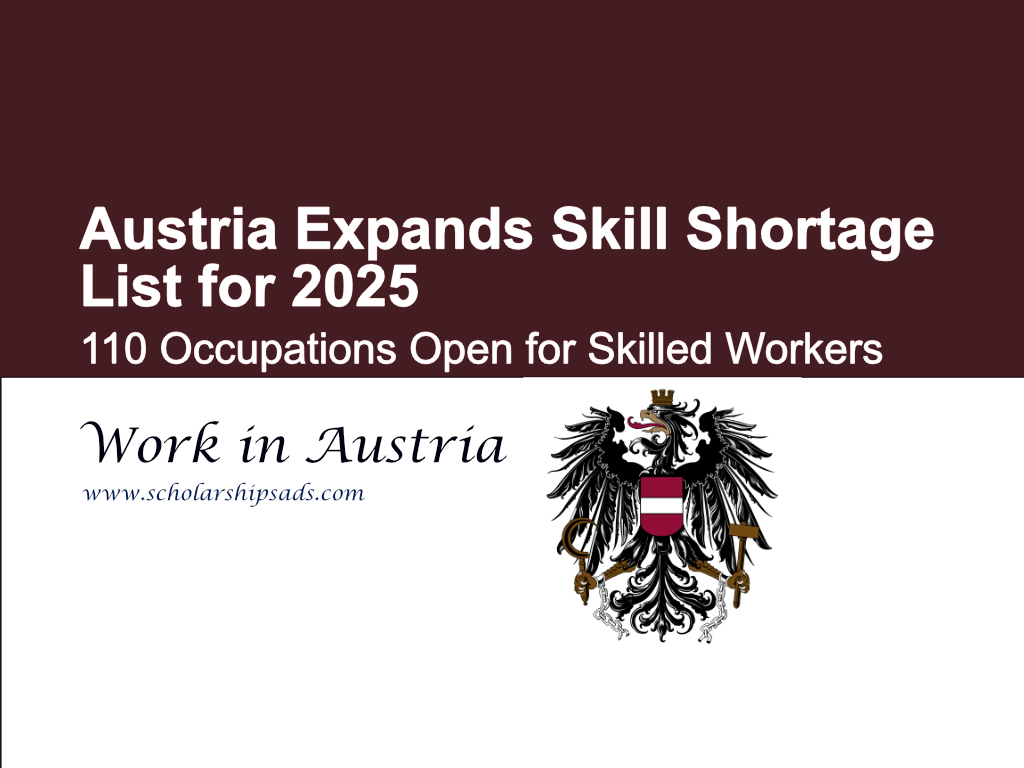Austria has unveiled significant changes to its immigration policies, adding 110 occupations to its skill shortage list for 2025. This expansion signals a strong effort to attract skilled professionals globally, offering enticing opportunities for those seeking competitive salaries and a high quality of life.
Why Austria Needs Skilled Workers
Austria faces a severe shortage of skilled labor in several industries, prompting the government to expand its skill shortage list. In 2024, the Austrian Immigration Department reported approving 3,200 Red-White-Red Card applications in just the first four months—a 35% increase compared to 2023. Labor Minister Martin Kocher projects this figure could climb to 1
The expanded list aims to address workforce gaps in sectors like healthcare, transportation, engineering, and education, ensuring Austria remains competitive in the global economy.
Highlights of Austria’s Updated Skill Shortage List
The list now includes a variety of traditional and emerging roles across key sectors:
- Healthcare
- Nurses
- Midwives
- Dietitians
- Transportation
- Train and bus drivers
- Conductors
- Engineering
- Mechanical and electrical engineers
- Data processing experts
- Education and Social Work
- Childcare workers
- Social workers
- Creative and Service Roles
- Hairdressers
- Cosmeticians
- Chefs
- Florists
This diverse list demonstrates Austria’s commitment to attracting talent in industries critical to its economic growth.
Work Permits for Austria: Red-White-Red Card and Blue Card EU
Austria provides two primary visa options for skilled professionals:
Red-White-Red Card
- Tailored for third-country nationals in shortage occupations, this permit allows applicants to live and work in Austria. Applicants must meet a points threshold based on education, experience, and language proficiency.
Blue Card EU
- Designed for highly skilled professionals, this card requires a minimum annual gross salary of EUR 47,855 (2024 figures), making it an attractive option for well-qualified candidates.
Benefits for Applicants in 2025
- The updated immigration policies promise smoother application processes, competitive salary packages, and faster visa approvals. With Austria’s robust economic infrastructure, professionals in shortage occupations can expect:
- Healthcare Workers: EUR 40,000–60,000 annually
- Engineers: EUR 50,000–70,000 annually
- Chefs: EUR 30,000–45,000 annually
- Bus Drivers: EUR 35,000–50,000 annually
How to Apply for Jobs in Austria
Interested candidates can explore opportunities through official job portals:
- AMS (Austrian Public Employment Service): https://www.ams.at/
- EURES (European Job Board): https://europa.eu/eures/
These platforms list verified job postings tailored for international applicants.
What’s Next for Austria’s Workforce in 2025?
The expansion of Austria’s skill shortage list and the streamlined immigration processes underscore the country’s proactive stance on workforce development. By attracting skilled professionals from across the globe, Austria ensures economic stability while offering exceptional opportunities for international talent.
For a detailed list of occupations and official application resources, visit Austria’s immigration portal: https://www.migration.gv.at/.
By addressing its labor shortages, Austria has positioned itself as a top destination for skilled workers in 2025. Don’t miss the chance to advance your career in one of Europe’s most dynamic economies!
